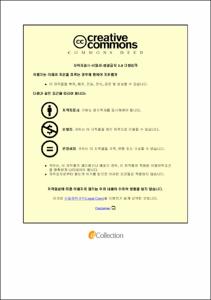식도 종양에 대해 내시경적 점막하 절제술을 시행한 환자에서 천공의 유병률과 위험인자
- Abstract
- AIM: To investigate prevalence and risk factors of esophageal perforation and which anesthesia is appropriate associated with esophageal endoscopic submucosal dissection (ESD) for esophageal neoplasm.
Methods: We retrospectively analyzed 507 esophageal ESD lesions from October 2007 to February 2019 in Asan Medical Center. Binary regression logistic analysis and multivariate analysis were used to investigate the risk factors of perforation after esophageal ESD. Additionally, we compared general anesthesia (GA) and under conscious sedation (UCS) to find out perforation occurrence by anesthesia method since November 2010 when GA mainly conducted. 1:6 matching was performed based on observed covariate (tumor long axis, invasion depth, circumference) thought to be affect perforation. Outcome analysis was performed using GEE (Generalized estimating equation) or Linear mixed model that accounts for the clustering of matched pairs.
Results: Esophageal perforation occurred in 24 of 507 cases (4.7 %) after esophageal ESD. UCS (OR= 3.861, 95% CI, 1.429- 10.42, P=0.008) and larger circumference (OR=3.465, 95% CI, 2.046- 5.955, P<0.001) were associated with esophageal perforation after ESD in total period investigation. Age (OR=1.007, 95% CI, 0.690- 1.056, P=0.773), sex (OR=1.687, 95% CI, 0.221- 12.88, P=0.614), underlying disease (OR=0.599, 95% CI, 0.264- 1.362, P=0.222), invasion depth (OR=1.333, 95% CI, 0.441- 4.023, P=0.61), histology (OR=6.624, 95% CI, 0.884- 49.61, P=0.066), predominance (OR=1.541, 95% CI, 0.661- 3.588, P=0.316), longitudinal location (OR=1.033, 95% CI, 0.946- 1.129, P=0.469), and direction (OR=0.434, 95% CI, 0.168- 1.120, P=0.085) were not significant.
However, there was no significant statistical difference in perforation (OR=5.952, 95% CI, 0.365- 100.0, P=0.2106) and other complications (OR=0.856, 95% CI, 0.097- 7.566, P=0.889) when compared with GA and UCS after GA was mainly used.
Conclusions: Larger circumference and UCS were considered as risk factors of perforation after esophageal ESD, but there was no significant difference of perforation by anesthesia method (OR=5.952, 95% CI, 0.365- 100.0, P=0.2106) when circumference was less than 25 %. Therefore, it is reasonable to choose methods of anesthesia by circumference of esophageal neoplasm.
Keywords: Esophageal neoplasm; Endoscopic submucosal dissection; Risk factors; Perforation; Anesthesia
- Issued Date
- 2020
- Awarded Date
- 2020-02
- Type
- Dissertation
- Alternative Author(s)
- Junyong CHONG
- Affiliation
- 울산대학교
- Department
- 일반대학원 의학과
- Advisor
- 최기돈
- Degree
- Master
- Publisher
- 울산대학교 일반대학원 의학과
- Language
- eng
- Rights
- 울산대학교 논문은 저작권에 의해 보호받습니다.
- Appears in Collections:
- Medicine > 1. Theses (Master)
- 파일 목록
-
-
Download
 200000287697.pdf
기타 데이터 / 360.76 kB / Adobe PDF
200000287697.pdf
기타 데이터 / 360.76 kB / Adobe PDF
-
Items in Repository are protected by copyright, with all rights reserved, unless otherwise indicated.